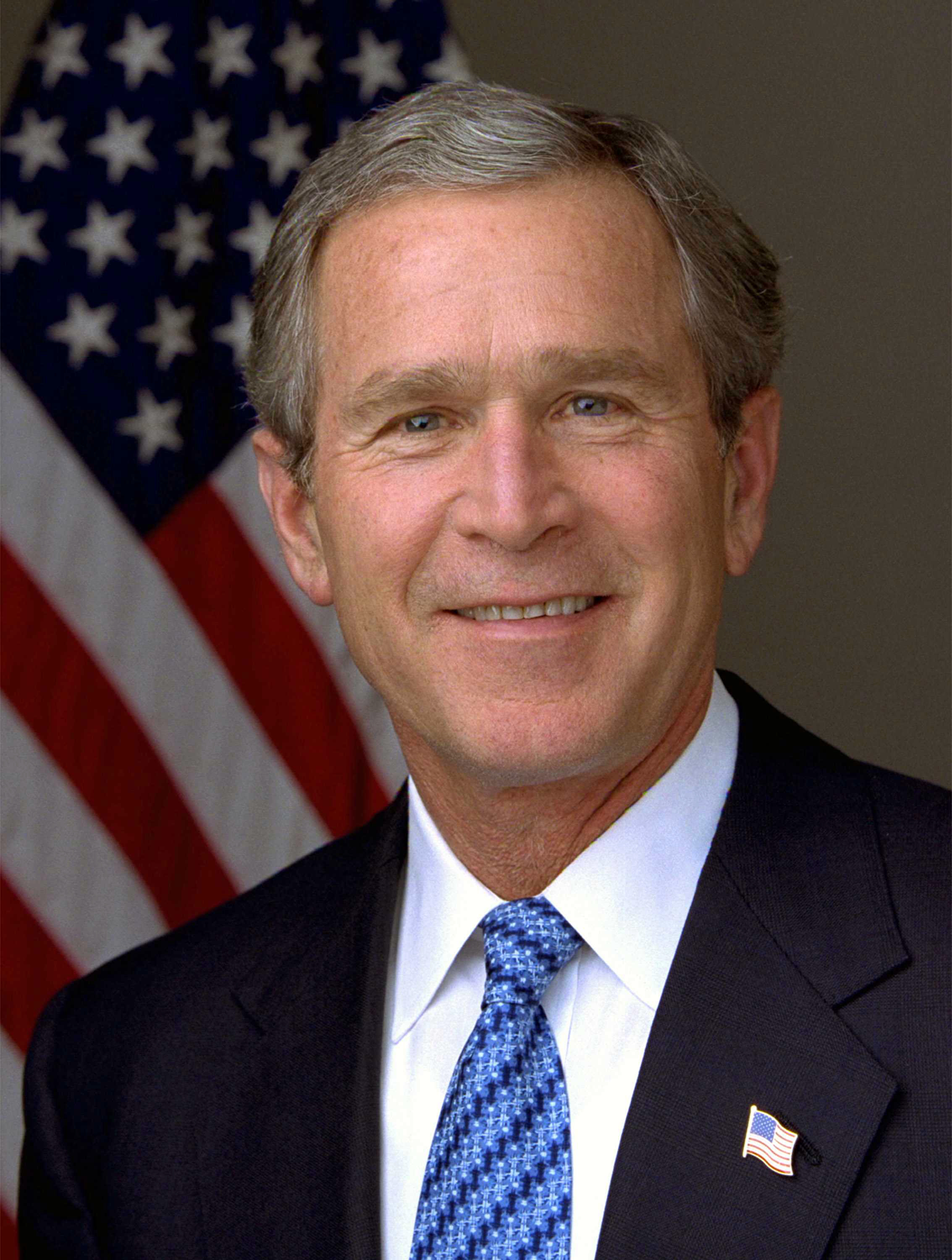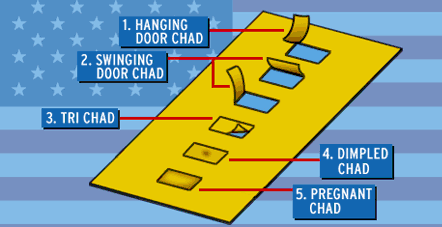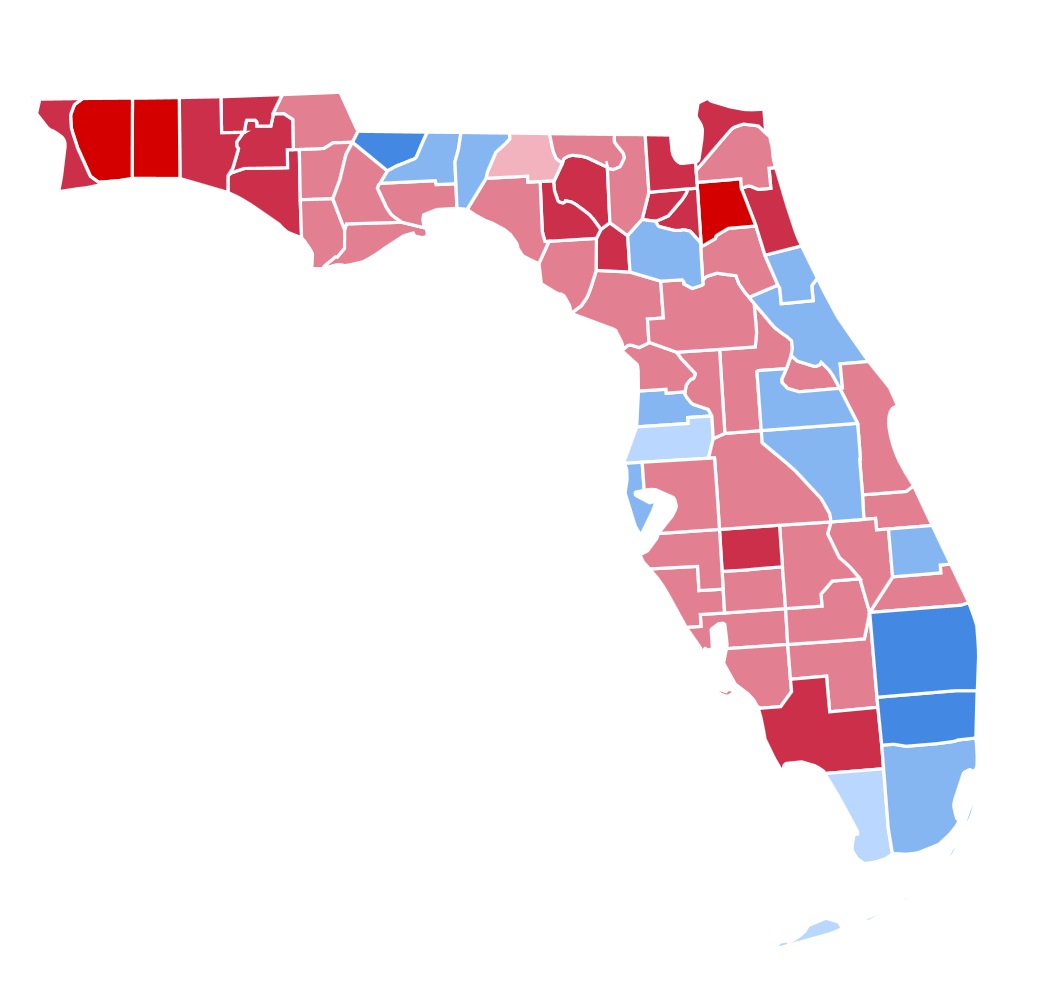
Topics on the Page
2000 Presidential Election
Bush v Gore Supreme Court Case
Candidacy of Ralph Nader
Lasting Impact of the Election
- Republicans and the Latino Vote
- The Women Vote and the Gender Gap
- Changing Focus of the Republican and Democratic Parties
 Cross-Links
Cross-Links
 eBook Connections: Elections and Nominations
eBook Connections: Elections and Nominations
Focus Question: What was the historical significance of the 2000 presidential election?




The system of electing the president in the United States consists of each state conducting their own voting period in which people vote.
- The winner of each state obtains a certain number of electoral votes which go through an Electoral College.
- The candidate with the most electoral votes becomes the president of the United States.
- The 1996 election marked the last time that long time Democratic strongholds in the south voted for the Democratic nominee for President
2000 Presidential Election
Close and Disputed Elections in US History

On November 7th, 2000, there was a presidential election between Al Gore, the Democratic candidate, George W. Bush, the Republican candidate, Ralph Nader, the Green Party candidate, and several other third party candidates.
- At the end of day, the election hinged on the outcome in Florida. First, the television networks said that Vice President Al Gore had carried the state. Then, the state’s election was considered “too close to call.” Then, the networks declared Texas Governor George W. Bush the winner.
- The presidential election was so close that it took five weeks to determine the winner. Vice President Al Gore carried the East and West Coasts and inland industrial cities, while Texas Governor George W. Bush won much of the Midwest and Plains, as well as the South.
- Gore gained a half-million more votes than Bush, but Gore lost the Electoral College when he lost Florida. Bush's official margin in Florida was by 537 votes.
With the presidency hanging on a few hundred votes in a single state, there were lawsuits and requests for recounts. Bitter disputes centered on confusing ballots, missing names from voting rolls, and subjecting minority voters to multiple requests for identification. The punch card ballots posed a major problem--they were vulnerable to voter error.
Political Cartoon about the 2000 Election

- Many ballots were called into question because voters failed to punch a hole all the way through the ballot. In an extraordinary late-night decision, the U.S. Supreme Court halted a recount ordered by the Florida Supreme Court.
- Here is an article explaining the issues with the ballot.
- A narrow majority of the Justices said that the recount ordered by the Florida Supreme Court violated the principle that “all votes must be treated equally.” It also ruled that there was not enough time to conduct a new count that would meet constitutional muster.
- The 2000 presidential election was the first in 112 years in which a president lost the popular vote but captured enough states to win the electoral vote.
Click here for an Election 2000 Timeline
The Endless Election
Results of the 2000 election
https://ropercenter.cornell.edu/polls/us-elections/how-groups-voted/how-groups-voted-2000/
Interactive election map
https://www.khanacademy.org/humanities/ap-us-history/period-9/apush-1990s-america/a/the-election-of-2000
The Florida Division of Elections reported that Bush had a very small margin of victory of 1,784 votes, the margin being less than 0.5%.
- Since the margin was so small, the there was an automatic machine recount of the votes.
- After the recount by machine was completed in all but one county on November 10th, there emerged an even smaller margin for Bush’s victory, becoming a total of 327.
- Al Gore demanded a manual recount of the votes in the counties of Volusia, Palm Beach, Broward, and Miami-Dade.
The Florida Secretary of State required that the results were returned within seven days of the election. Three counties, except Volusia, could not meet the deadline of November 14th. At this point, it became clear that the election depended on Florida’s electoral votes.
The Bush v. Gore Supreme Court case took place on December 11, 2000.
 Go here for Ruth Bader Ginsburg's dissent in Bush v. Gore
Go here for Ruth Bader Ginsburg's dissent in Bush v. Gore
The counting of ballots was stopped because of the Equal Protection issues in using different standards of counting ballots in different counties. It then halted any further recounts using alternate procedures by a vote of 5-4.
The per curiam opinion found that there was an insufficient amount of time to establish any new standards for another recount before the deadline that Florida had issued.
After the decision to put a stop to the recount, Harris was allowed to certify that George Bush was the winner of Florida’s electoral vote by the margin of 537 votes.
- This small margin gave Bush the 271 electoral votes, being one over the required 270, to win the presidency.
- Al Gore received 266 electoral votes.

Florida Presidential Election Results Map by Ali Zifan. Licensed by CC BY-SA 4.0
The 2000 election is one of four in U.S. history in which the "winner" received less popular votes but prevailed with a slim majority in the electoral college.
- This outcome predictably called for a re-examination of the use of the electoral college which dates back to the drafting of the Constitution in 1789.
- Since this is specifically written into the Constitution, an amendment would be required to change the way Presidential elections are conducted - a high hurdle to clear
- And unlikely to succeed since many states with smaller populations gain representative advantage with the system as it is.
Florida Election Worker Examining a Voter Ballot for an Hanging Chad, December, 2000
 To make matters worse, there were a host of glaring irregularities which have never come under official investigation and all things being equal Gore should have prevailed in Florida by a comfortable margin.
To make matters worse, there were a host of glaring irregularities which have never come under official investigation and all things being equal Gore should have prevailed in Florida by a comfortable margin.
- Thousands, if not tens of thousands of eligible voters were purged from the rolls in an overt move to disenfranchise African-Americans who overwhelmingly supported Gore.
- Voting machines in a district heavily populated by Jewish-Americans inexplicably tallied a large number of votes for Pat Buchanan, a man linked to innumerable antisemitic statements
https://www.thenation.com/article/how-the-2000-election-in-florida-led-to-a-new-wave-of-voter-disenfranchisement/

Click here to watch news footage from ABC News This Week during the Bush vs. Gore Presidential Election standoff. ABC News looks at threaded chads, dimpled chads and pregnant chads in deadlocked Florida vote count.
https://www.oyez.org/cases/2000/00-949
Impact of the candidacy of Ralph Nader

Claiming he could see no difference between Republican candidate George W. Bush and Democratic candidate Al Gore, consumer advocate Ralph Nader ran for president as the candidate for the Green Party.
- Gore ultimately lost one of the closest elections in American history, and Nader was accused of having taken support away from him in several key states, especially Florida, where Gore lost by 537 votes.
- Subsequent studies on the election were divided in their assessment of how influential Nader’s campaign actually was, however most political experts point to the fact that Gore lost in his home state of Tennessee, that over 250,000 Democrats in Florida voted for Bush and that it was the U.S. Supreme Court that halted the recount in Florida, allowing Bush to ultimately win the election.
Link to an article examining the effect of Ralph Nader's 2000 campaign on the 2016 Presidential campaign.
Did Nader cost the election?
B. Lasting Impact of the 2000 Election
The controversy surrounding the Florida voting ballots incited a conversation of standardized voting methods. Electronic voting machines have been instituted to decrease the impact of human error. Many Democrats blame the Green Party candidate Ralph Nader. His presence in the election, they contend, split the votes for Gore and therefore aided Bush. The main focus of the aftermath however, came from critics of the Supreme Court. The court ruled in a five to four decision that the Florida recount by the December 12th deadline was unconstitutional. The Rehnquist Court had a conservative majority and many argue that the court simply choose to put Bush in office.
The controversy generated by these and other procedural irregularities was made more intense by the fact that the candidates represented two highly divergent visions of what path the country should take. Bush's campaign was intentionally divisive in nature and successfully set about creating two Americas at odds with one another. The controversy surrounding the election generated a great amount of interest in Voting processes.
Since 2000 there have been numerous documentaries about the Diebold/Halliburton voting machines and other possible causes for voting irregularities.
- It also spawned the movie RECOUNT an HBO film starring Kevin Spacey and Dennis Leary. It showed a dramatic look at the time following the announcement of Bush's victory in Florida and subsequent recount.
https://www.youtube.com/watch?v=z3os_Vw1Eoo

The Presidency of George W. Bush as a result of the 2000 election
Republicans and the Latino Vote
While every Democratic candidate has won the majority of the U.S. Latino vote since 1980, George W. Bush did relatively well with Latino voters, coming within 27 percentage points of Gore in 2000 and finishing even closer in 2004 trailing John Kerry by 18 percentage points. Seeking to secure lasting Hispanic support for Republicans, Bush in 2007 threw his support behind a bipartisan push for comprehensive immigration reform on the Hill. But the legislation failed amid a talk-radio-fueled backlash over “amnesty” — granting legal status to many immigrants who arrived in the country illegally — as well as a lack of political capital on Bush’s part and ambivalence among many Democrats and organized labor about the bill’s provisions. The Republicans have been trending down ever since.
Click here for an in-depth article on the Latino vote including the impact of George Bush.
https://www.nytimes.com/2016/09/18/magazine/how-republicans-lost-their-best-shot-at-the-hispanic-vote.html
Click here for a New York Times Magazine article on how the Republicans lost their best shot at the Hispanic vote after Bush.
The Women Vote and Gender Gap
The gender gap in voting between men and women was very present during this election year. Not just for the Presidential election but Senate elections as well. this article helps show how when the Women vote was divided it led to a more contested election than if the Women vote was a larger majority.
https://cawp.rutgers.edu/sites/default/files/resources/pressrelease_12-00_gg2000.pdf
C. The growing influence of the Republican Party in the South and the consolidation of the Democratic Party’s hold on the coasts:
There are two major political parties in the United States: Republican Party and the Democratic Party.
 |
| Democratic Party logo |
 |
| Republican Party Logo |
The Republican Party is also referred to as the Grand Old Party.
The Republican Party was organized by anti-slavery expansion activists and modernizers in 1854. The first Republican president was Abraham Lincoln; George W. Bush is the 18th Republican President.
The Republican Party, when compared to the Democratic Party, is socially conservative. It includes a lot more fiscal conservatives, social conservatives, neoconservatives, libertarians and members of the Religious Right. The Republican Party took the notions for the opposition of abortion rights and same sex marriage based on purely religious reasons. Although the Republican Party supports the advancement of scientific research, many members are opposed to the research of embryonic stem cells, again, for ethical reasons. Many also do not believe in Man made climate change which was a main part of Al Gore's platform for the 2000 election.
The Democrats were founded by Andrew Jackson following his loss in the 1824 election.
Formerly a member of the Democratic-Republican(Started by Thomas Jefferson) Jackson started his own party called the Democrats, however most people began referring to the members of the party as "Jacksonian Democrats" in order to separate them from the former Democratic-Republicans. In fact part of the reason that people began using the Donkey as the symbol for the Democrats was as a reference to Jackson's name and stubbornness.
The Democratic Party represents the interests of working families and works to provide equal opportunities for all foreigners and immigrants. The Democratic Party holds in value a secure nation that leads in the world, economic growth and the creation of new jobs, affordable health care service for all Americans, and an improved education for children. The Party also very strongly supports equal opportunity for all people, disregarding barriers such as sex, age, race, sexual orientation, creed, or national origin. Included in these interests are the ideas of same-sex marriage and abortion and birth control being in full decision of the woman that it applies to. Also, the Democratic Party supports stem cell research “under the strict ethical guidelines” to save lives and to reduce the suffering of humans.
Political Parties, the New Deal Coalition and the Changing Allegiance of Southern States to the Republican Party
People living in the Southern are more conservative and their ideas are identified with the Republican Party. Liberals living in the West identify with the Democratic Party. Since 1980, the GOP has contained, what George Will calls, "unresolved tensions between, two flavors of conservatism, Western and Southern." The Western is largely libertarian, holding that pruning big government will allow civil society and virtues nourished by it and by the responsibilities of freedom.
Southern States reflect a religion-based and evangelical fundamentalist churches and are less concerned with economics and are more concerned about moralistic issues such as opposition to abortion and being anti same-sex marriage. With regard to the waning influence of libertarian philosophy on contemporary Republican ideology, the current Republican Party can be described as "increasingly defined by the ascendancy of the religious right."
The Republican Party was formed in the years running up to the Civil War and represented those opposed to the expansion of slavery into western territories. It came to be the party of Lincoln, the Emancipation Proclamation and Reconstruction.
- White majorities throughout the South overwhelmingly supported Democratic candidates for generations following the collapse of the Confederacy.
- The ties that bound southern whites to the Democratic Party began to be tested when the latter's platform moved to the left starting in the 1930's and many were ready to make the break by the time President Johnson signed the Civil Rights Act into law in 1965.
- Richard Nixon was the first candidate to capitalize on this rift, employing his "southern strategy" to narrowly defeat his Democratic opponent in 1968.
- The South has been solidly Republican ever since in spite of the fact that several Democratic candidates were natives of that region. Barack Obama made some inroads in 2008, carrying North Carolina and Virginia, hailing what some see as the beginning of a major, long-term electoral shift.
- Yet while in Presidential Elections the South has moved to become solidly Republican, the state elections still tend to elect Senators that are Democrats.
Teaching Resources
Lesson Plan: Presidential Election and Electoral College
Al Gore conceding to the Presidential Election of 2000 (Speech)
- Exit Polls of the 2000 Presidential Election
- Showing the supporters of each candidate by state, race, gender, income and education.
- How Groups voted
Sources
- Cornell University, Legal Information Institute, (2007). Supreme Court Collection. Retrieved May 3, 2007, from LII Web site: http://www.law.cornell.edu/supct/html/00-949.ZPC.html
- The OYEZ Project, (2007) Bush v. Gore, 531 U.S. 98 (2000) retrieved May 3, 2007, From OYEZ Web site: http://www.oyez.org/cases/2000-2009/2000/2000_00_949/
- The Court and Government Printing Office, (2005). Florida Election Case. Retrieved May 3, 2007, from Supreme Court of the United States Web site: http://www.supremecourtus.gov/florida.html
- PG Publishing Co., (2005). Election 2000 Timeline. Retrieved May 3, 2007, from Post-gazette.com Web site: http://www.post-gazette.com/election/20001217pztimeline.asp
- Wikipedia Foundation, Inc., (2007). Bush_v._Gore. Retrieved May 3, 2007, from Wikipedia Web site: http://en.wikipedia.org/wiki/Bush_v._Gore
- Wikipedia Foundation, Inc., (2007). ElectoralCollege2000. Retrieved May 3, 2007, from Wikipedia Web site: http://en.wikipedia.org/wiki/Image:ElectoralCollege2000-Large.png
- Democratic National Committee Service Corporation, (2007). Our Party. Retrieved May 3, 2007, from The Democratic Party Web site: http://www.democrats.org/ourparty.html
- Wikipedia Foundation, Inc., (2007). Republican Party. Retrieved May 3, 2007, from Wikipedia Web site: http://en.wikipedia.org/wiki/Republican_Party_(United_States)
- Wikipedia Foundation, Inc., (2007). Democratic Party. Retrieved May 3, 2007, from Wikipedia Web site: http://en.wikipedia.org/wiki/Democratic_Party_(United_States)
- Republican National Committee, (2007). Issues. Retrieved May 3, 2007, from GOP.com Web site: http://www.gop.com/Issues/
Quiz Question:
Which state was the deciding state to meet the electoral vote quota to win the Presidency?
-
North Carolina
-
Ohio
-
Florida
-
Virginia
Answer: C- Florida was the state that eventually enabled George Bush to secure the Presidency and was so close it needed to be recounted in many counties.
Comments (0)
You don't have permission to comment on this page.